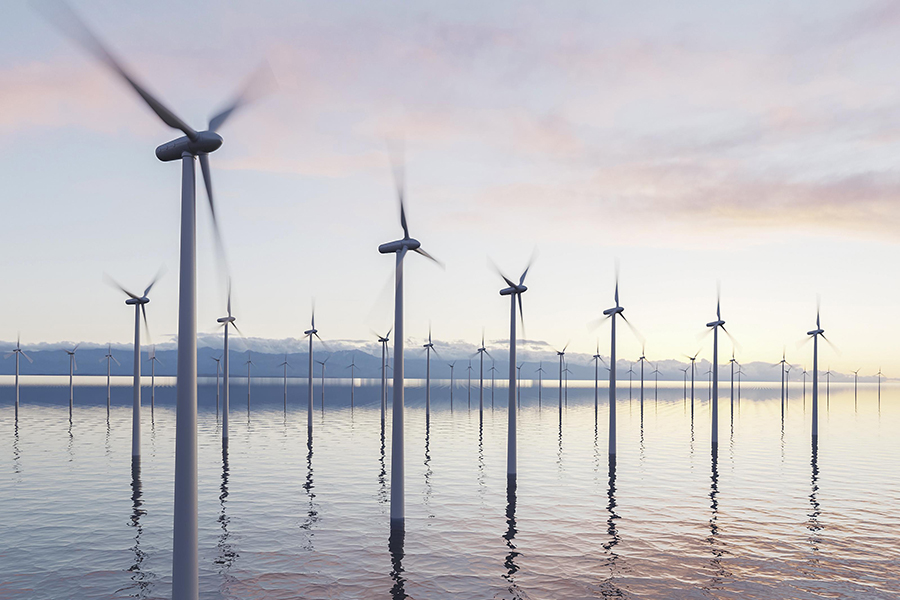Promoters promise clean energy from hydrogen production with carbon capture and storage, but skeptics question reliance on technology that hasn’t been proven at scale.
Critics say a pair of proposals to make Appalachian Ohio part of regional hydrogen hubs is likely to benefit the state’s oil and gas industry more than the climate.
The two proposals are among 21 projects competing for shares of a $7 billion pot of grant money under the 2021 Bipartisan Infrastructure Law. The law defines hydrogen hubs as networks of clean hydrogen producers, their potential consumers and infrastructure connecting them. At least one of the winning projects is to be a “blue” hydrogen hub, meaning it would make hydrogen from fossil fuels with carbon capture, storage and possible reuse, or CCUS.
The Appalachian Regional Clean Hydrogen Hub plans to collect methane from a web of natural gas pipelines in Ohio, West Virginia, Pennsylvania and Kentucky for a hydrogen production facility in West Virginia. The ARCH2 coalition includes Battelle, natural gas industry companies, the state of West Virginia, and more.
The Decarbonization Network of Appalachia, or DNA H2Hub, has the economic development group Team Pennsylvania as its project lead and is also proposing a blue hydrogen hub for Pennsylvania, West Virginia and Ohio. Equinor and Shell are among the group’s corporate partners.
Because both hubs would use methane from the region as feedstocks, they represent potentially large customers for the natural gas industry.
“We believe there are opportunities for the industry in a regional hub or hydrogen ecosystem and that Appalachia is more suited than most areas because of our compactness, access to natural gas and manufacturing infrastructure,” said Rob Brundrett, president of the Ohio Oil & Gas Association. “There certainly would be a benefit, especially the role natural gas plays in the creation of blue hydrogen, but we think it is too early to tell exactly what and how much benefit it may be to the industry.”
Much will depend on how hydrogen from the hubs will be used, whether it will displace other current uses of methane, and overall costs and market prices for natural gas. Rough estimates from the Ohio Oil & Gas Association are that recent production has gone in equal shares to power generation, heat and chemicals.
On the high end, blue hydrogen hubs might increase natural gas consumption and industry revenues. On the low end, sales to hydrogen hubs could offset potential losses if other uses decrease as a result of the energy transition.
Hydrogen production with natural gas and capture of carbon emissions from burning natural gas have gone on for decades, said policy advisor Rachel Fox at the American Petroleum Institute. Current U.S. hydrogen production is approximately 10 million metric tons per year, she said.
“The new challenge and opportunity is to scale these two complementary technologies together,” Fox continued. “API and our members are excited about the H2Hubs program and the impact it could have on the growth of a low-carbon hydrogen economy.” She said the industry has shown 65% to 90% carbon capture rates are commercially achievable.
‘A risky gamble’
As a decarbonization strategy, a blue hydrogen hub would be “a really energy-intensive, really water-intensive thing that commits that sector to being fossil-based forever, essentially,” said Emily Grubert, an energy policy expert at the University of Notre Dame.
It’s unclear whether blue hydrogen “would even result in a net reduction of carbon emissions,” said Ben Hunkler, communications manager for the Ohio River Valley Institute. In a 2022 analysis, he said a blue hydrogen hub would be “a risky gamble,” whose costs likely outweigh environmental benefits when compared with other options, such as renewable energy.
Although industry and government “now talk about carbon capture as having been proven, it really hasn’t,” said David Schlissel, director of resource planning and analysis for the Institute for Energy Economics and Financial Analysis. There hasn’t been any long-term, large-scale demonstration of its effectiveness over the time frame when promoters expect blue hydrogen hubs to operate.
Methane leakage from pipes and other infrastructure would add to emissions, Schlissel said. Methane is a more potent greenhouse gas than carbon dioxide, and numerous studies have found methane emissions are vastly underreported.
Hydrogen can also leak, especially because its molecules are so small. “We think it leaks everywhere, but there’s no commercially available technology that can measure hydrogen leakage,” Schlissel said. Leaked hydrogen could prolong methane’s impacts in the atmosphere, researchers reported in Nature Communications last December.
Notably, both the Ohio Oil & Gas Association and the American Petroleum Institutehave commented against the U.S. Environmental Protection Agency’s proposed rules that would effectively require carbon capture and storage for fossil fuel-fired power plants.
The ability to outfit power plants with carbon capture equipment isn’t advanced enough to be feasible yet, Brundrett said. “Therefore, at this time we would not encourage any mandates regarding a technology that isn’t available to the scale required by the rules.”
It’s unclear how the CCUS technology for a power plant would differ from that for a hydrogen production facility. Brundrett said the technology “has a promising future, and we will remain engaged in the hydrogen hub process with the hope that Appalachia is able to utilize our natural advantages if awarded by the federal government.”
A ‘moon shot’
For now, chances seem good that at least one of the projects will get funding. The Bipartisan Infrastructure Act requires at least two regional clean hydrogen hubs to be in places with “the greatest natural gas resources.” Separate provisions let theAppalachian Regional Commission provide grants and technical assistance for a regional hydrogen hub.
The federal funding is meant to act like a “moon shot,” to quickly ramp up clean hydrogen production.
“The reality is that we believe that there’s a near-term climate need that we need to be addressing, [and] that we need to think about how quick can we bring one of these technologies or a lot of these technologies to the marketplace,” said Thomas Murphy, senior managing director for strategic energy initiatives at Team Pennsylvania, during a webinar presented this summer by Appalachian Energy Future, an industry-led alliance promoting hydrogen hubs.
The DOE initiative aims to “[drive] down the cost of getting new technologies into the market,” said Grant Goodrich, who heads the Great Lakes Energy Institute at Case Western Reserve University. “You’re increasing market readiness and market demand.”
And while scaled commercial carbon capture and storage technologies don’t yet exist and can’t operate without government support, the Department of Energy’s hydrogen hub initiative could jumpstart a hydrogen economy for hard-to-electrify uses, such as high-heat industrial processes, heavy-duty transportation, or aviation, Goodrich said. That in turn might lead to effective carbon capture for other hard-to-decarbonize industries that produce greenhouse gases, such as the cement industry.
The DOE guidelines also call for projects to track how clean their processes turn out to be, Goodrich said. That should provide some accountability.
DOE’s decisions on the grant applications could come before the end of the year. DOE will also spend $1 billion to develop demand for hydrogen from the hubs, the agency announced in July.
This story originally appeared at Energy News and is republished here as part of Covering Climate Now, a global journalism collaboration strengthening coverage of the climate story.





